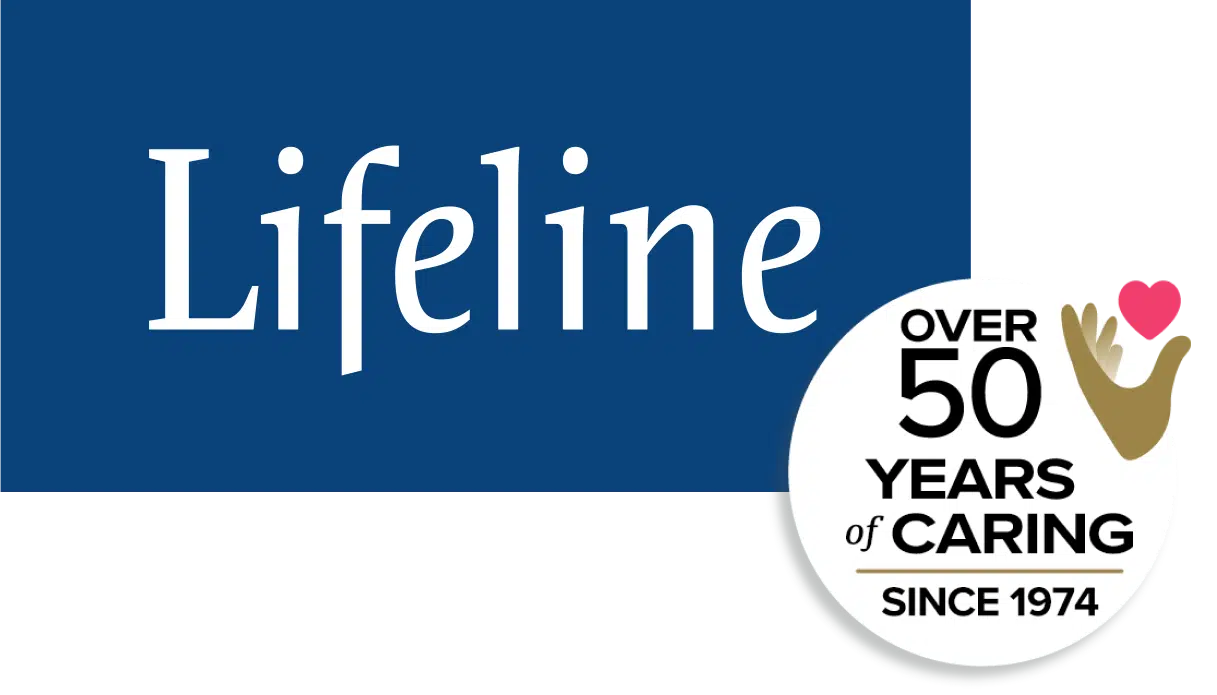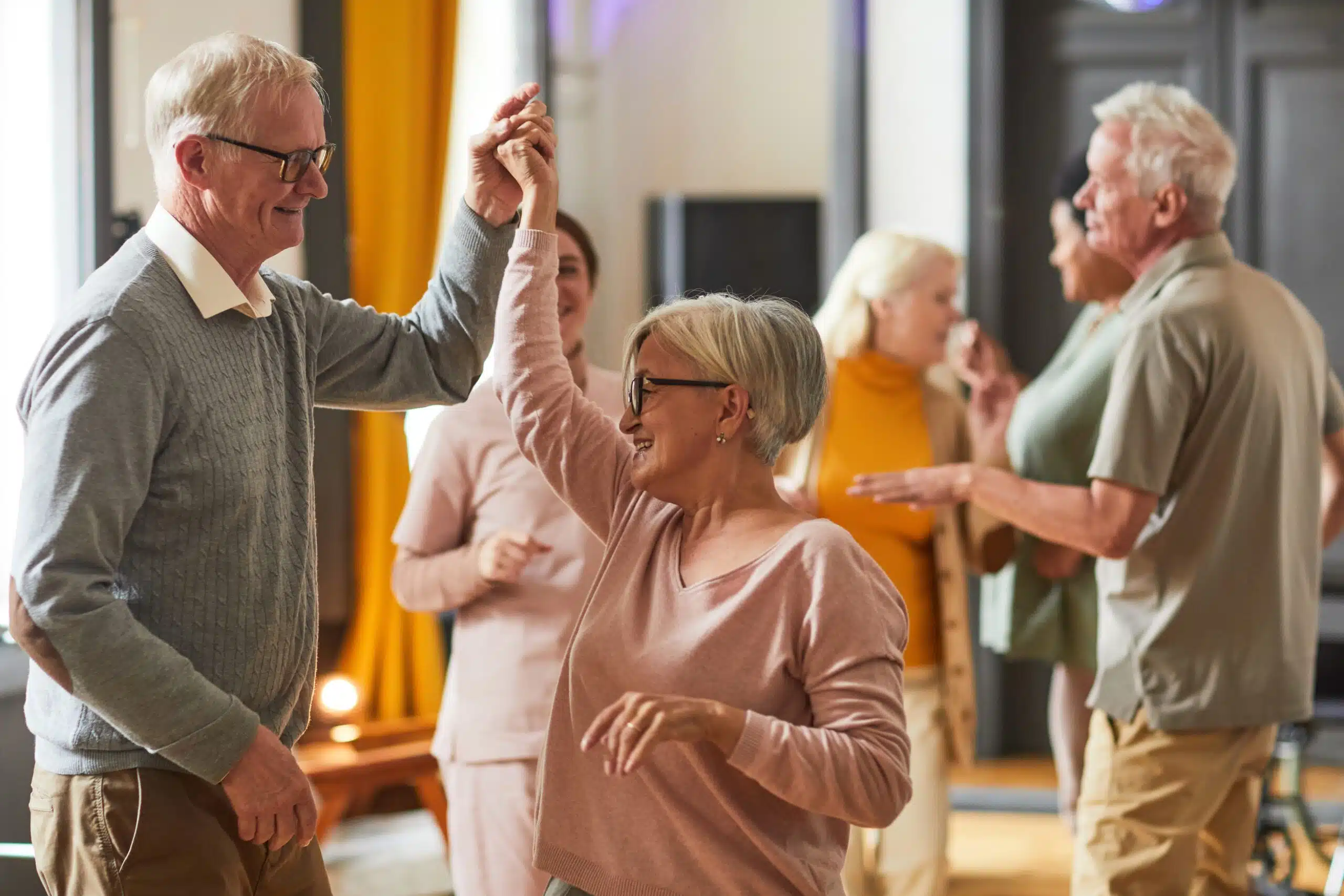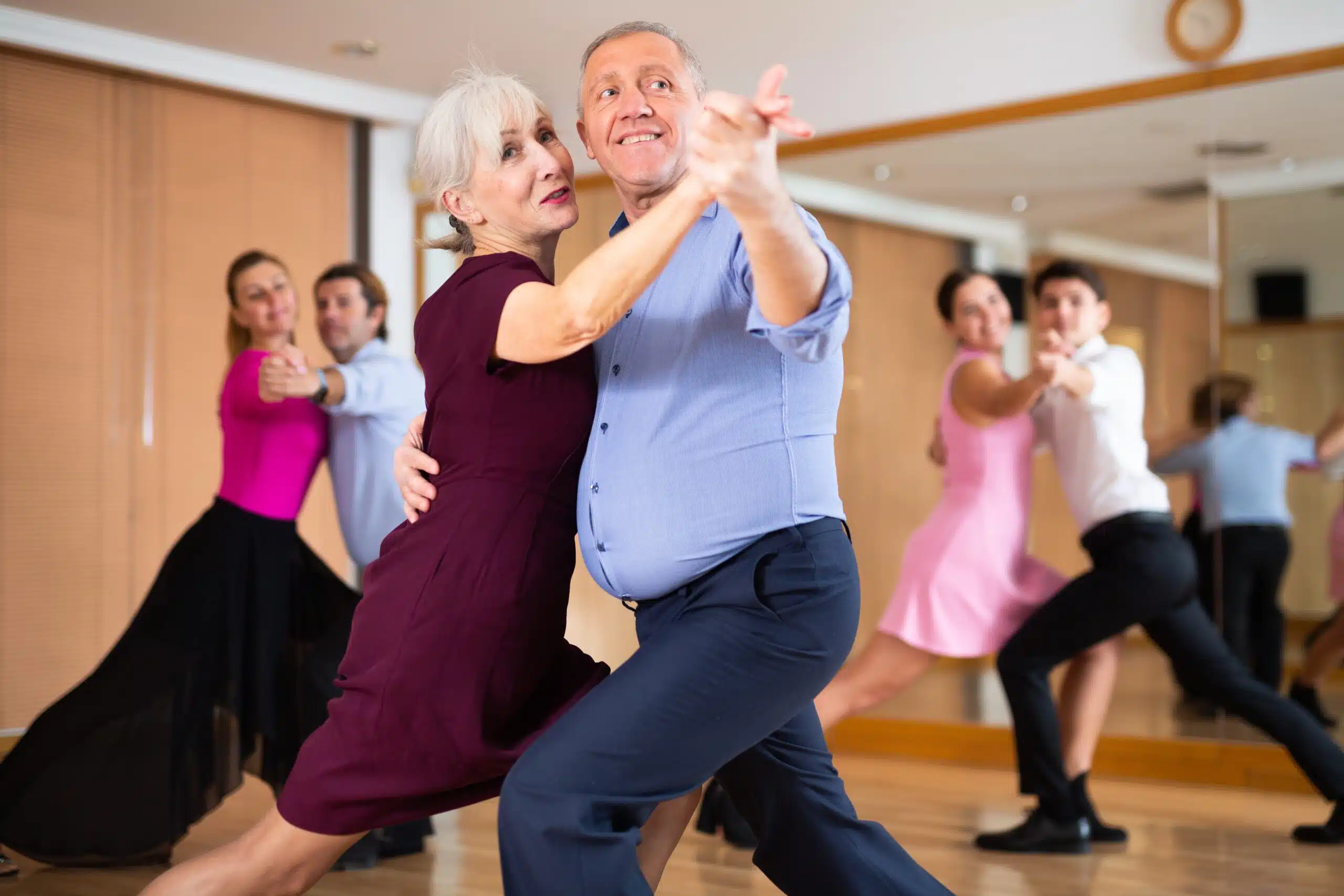Key Tips Discussed in This Blog
- Start with joyful movement. Choose a dance style you enjoy to make balance and coordination exercises feel fun and sustainable.
- Look for structured, research-based programs. Classes like adapted tango have shown measurable improvements in gait, balance, and overall confidence among older adults.
- Focus on safety first. Wear stable shoes, clear your dance space, stay hydrated, and check with your healthcare provider before beginning a new activity.
- Adapt movements to your comfort level. Whether standing or seated, dance can be modified to fit your mobility and energy levels.
- Join group classes to stay motivated. Dancing with others adds accountability, builds community, and helps reduce feelings of loneliness.
Dance is a joyful movement that blends seniors’ balance exercises with music and rhythm. For many older adults, it feels easier to follow a tune than to follow a routine workout, and that simple shift can make all the difference. Dancing helps build coordination and flexibility while lifting mood and strengthening social connections that support independence.
If you want to prepare before joining a dance class, it can help to start with a few fall prevention tips at home to boost your confidence and safety.
Why Dance Works
According to Harvard Medical School, dancing activates multiple parts of the brain responsible for memory, attention, and motor learning, which may help keep both the mind and body agile as we age.
Balance and Awareness
Rhythmic steps, weight shifts, and changes of direction build balance and awareness—core elements of many seniors’ balance exercises. Research on structured programs such as adapted tango dancing shows that consistent participation can improve walking stability and coordination, even in people with limited mobility. Music helps cue stride and rhythm, while partnered sequences encourage whole-body movement that carries into everyday walking.
Strength and Flexibility
Dance also builds strength and flexibility. Repeating comfortable ranges of motion can enhance lower-body stability and joint mobility, and chair-friendly routines can target the upper body. In a randomized trial published in BMC Geriatrics, older adults who used wheelchairs and participated in dance-movement therapy sessions showed significant improvements in grip strength, flexibility, and daily function compared to those who received traditional exercise.
Self Confidence
Beyond physical gains, dance fosters confidence. Each new step mastered is a reminder of capability, which is an essential part of fall prevention. Because dance involves rhythm and creativity, many participants report enhanced focus and mood as well. Qualitative research on dance among older adults notes feelings of presence, joy, and emotional expression. These are clear benefits that keep people engaged.
Types of Dance Seniors Can Try
There is no single right style. The best dance is the one you enjoy and feel comfortable doing.
- Gentle social dances like the waltz or foxtrot, performed at slower tempos, promote posture and coordination while offering the fun of moving with a partner.
- Line dancing is great for reaction time and footwork. It uses simple, repeated steps and does not require a partner, which can boost confidence in group settings.
- Latin-inspired options such as modified tango or cha-cha can build rhythm and coordination at a comfortable pace. Many evidence-based dance programs draw on these styles because they emphasize safe pacing, balance, and structured movement patterns.
- Chair-based dance routines pair uplifting music with upper-body movement, providing benefits even for those with limited lower-body mobility. Research on dance-movement therapy for older adults who use wheelchairs found significant gains in upper-limb strength, flexibility, and daily function among participants who performed seated, music-based movement sessions.
- Creative movement classes encourage self-expression, memory, and mood. In an art-based study on dance and communication among older adults, participants described connection, “playful seriousness,” and joy as key reasons they continued dancing.
When choosing a class, look for senior-friendly labels, trained instructors, and programs that include warm-ups, breaks, and cool-downs. Warming up with flexibility exercises or combining dance with swimming can also help maintain balance and range of motion.
Safety Tips
A few small steps can help you stay safe and confident while dancing.
- Check with your healthcare provider before beginning a new activity, especially if you manage health conditions.
- Start low and go slow. Begin with shorter sessions and gentle movements, then increase gradually as your comfort grows.
- Choose proper footwear and a safe space. Stable shoes, good lighting, and clutter-free floors reduce tripping risk. Keep a sturdy chair or handrail nearby for balance support.
- Stay hydrated and fuelled. Water and light snacks can help maintain energy.
- Adapt for mobility. If balance is a concern, try line dances with fewer turns or chair-based routines. For wheelchair users, light resistance movements can strengthen the upper body.
- Find supportive instructors. Small groups with trained facilitators promote safety. Adapted tango programs, for instance, use structured lessons and partner pairing to prevent falls.
- Plan for what-ifs. Knowing how to respond if a fall occurs and having access to immediate help through a medical alert device can provide reassurance.
Fun and Social Benefits
The joy of dancing often keeps people active long after other forms of exercise lose appeal. Music transforms movement into something that feels natural and expressive, helping seniors stay consistent with physical activity. Group dance classes create opportunities for friendship, laughter, and community, reducing loneliness and bringing routine to the week.
Research on art-based dance experiences for older adults highlights emotional freedom, connection, and creativity as central benefits. These sessions can reduce stress and enhance overall well-being. Dancing with others can also ease caregivers’ concerns, as regular participation often increases confidence and independence.
See also: How Social Interaction Benefits Seniors
Find Your Rhythm, Your Way
Dancing is as much about joy as it is about movement. Choose a style that feels comfortable and fun, take your time learning, and celebrate every small victory. Independence is protected when support is within reach.
To add confidence while you stay active, consider Lifeline’s On the Go options.
What You Should Do Now:
Here are 5 ways we can help you or your loved one live safer and more independently at home as long as possible:
- Get our latest tips, tools and resources straight to your inbox. Sign up for our monthly newsletter.
- Not sure if the time is right for a medical alert service? Take this quick assessment to find out.
- If you would like to learn how to live a healthier and safer lifestyle, go to our blog or visit our resources section, where you can read and download guides.
- Wondering which medical alert system company is the best for your needs? We’ve put together a guide comparing the best medical alert systems for you.



